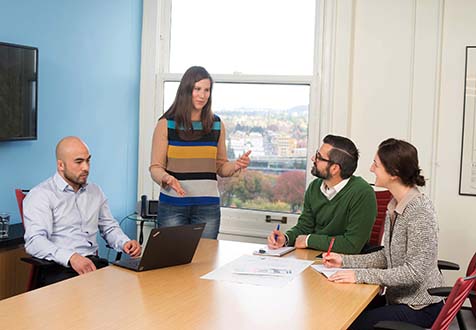How Better Workplace Policies Help New Parents
Mechanical Engineer Katie Zabrocki offers some thoughts on her family's past leave experience, and how improving workplace policies can help ease pressure for new parents.
When I found out I was pregnant with my son, I was so excited with the thought of starting a family. My husband and I had recently purchased a house and had been building our savings back up. I was admittedly naïve about the state of family leave, especially relating to mothers, in this country. In my mid-twenties, companies’ benefit offerings were a factor in selecting employment, but I was not specifically looking out for family leave benefits. My education came quickly. I soon discovered that there is no “maternity leave.” I learned about the Family Medical Leave Act and was underwhelmed with how little it covered. At least, I realized, wouldn’t be fired or demoted while I was away. Many women can’t even count on that due to the size of their company, part time employment status or tenure.
The income assistance available to me was through short term disability where pregnancy is treated as an illness. The forms have questions like, “Did this happen at work?” and “Have you had this illness previously?” Questions that felt insulting and inappropriate for the reality of my situation, at least for this millennial feminist. In the end, short term disability covered about 50% of my pay for 6 weeks. After that, I was on my own to cobble together what paid time off I could accrue and balance with additional unpaid time.
The uncertainty I felt when I realized the full extent of what my “maternity leave” would be was immense. I’m the primary breadwinner in my family and the prospect of taking several weeks unpaid seemed daunting. I felt like I had to choose between depleting our family’s savings to take unpaid leave and spending time healing and bonding with my new baby. This was a huge source of anxiety, stress and tension during a time where I was still working full time, getting a MBA and preparing for our new family member.
In the end, we had a stringent budget and leaned on our savings to make it through. When I came back to work at 10 weeks post-partum, I had no paid time off available and felt vulnerable – what if I became sick, what if my 10 weeks old baby was sick at daycare? My spouse had taken 2 weeks off and his PTO was limited, as well. How much more unpaid time could we absorb?
I felt personally depleted and my savings felt depleted. Having a new baby is a big expense for families. In addition to the normal things like car seats, diapers, a crib, strollers and other typical baby supplies, medical bills are substantial. Without some sort of family leave to cover income, it’s easy to feel like your legs are cut out from under you before you start.
My (not so great) experiences with maternity leave in the past have made me exceptionally pleased at the extent of PAE’s new Wellness Leave policy. I feel it’s an amazing benefit that makes a statement about the importance of our people and will truly improve employees’ quality of life.
PAE’s new Wellness Leave policy aims to change the norm for many expecting parents. It offers 6 weeks of full salary for any PAE employee welcoming a child through birth, adoption or foster placement. It can also be used by employees dealing with a serious health condition of their own or a loved one. For expectant mothers this benefit is combined with short term disability leave through the Oregon Family Leave Act and offers up to 3 months of nearly full paid leave. Learn more about PAE’s Wellness Leave here.



